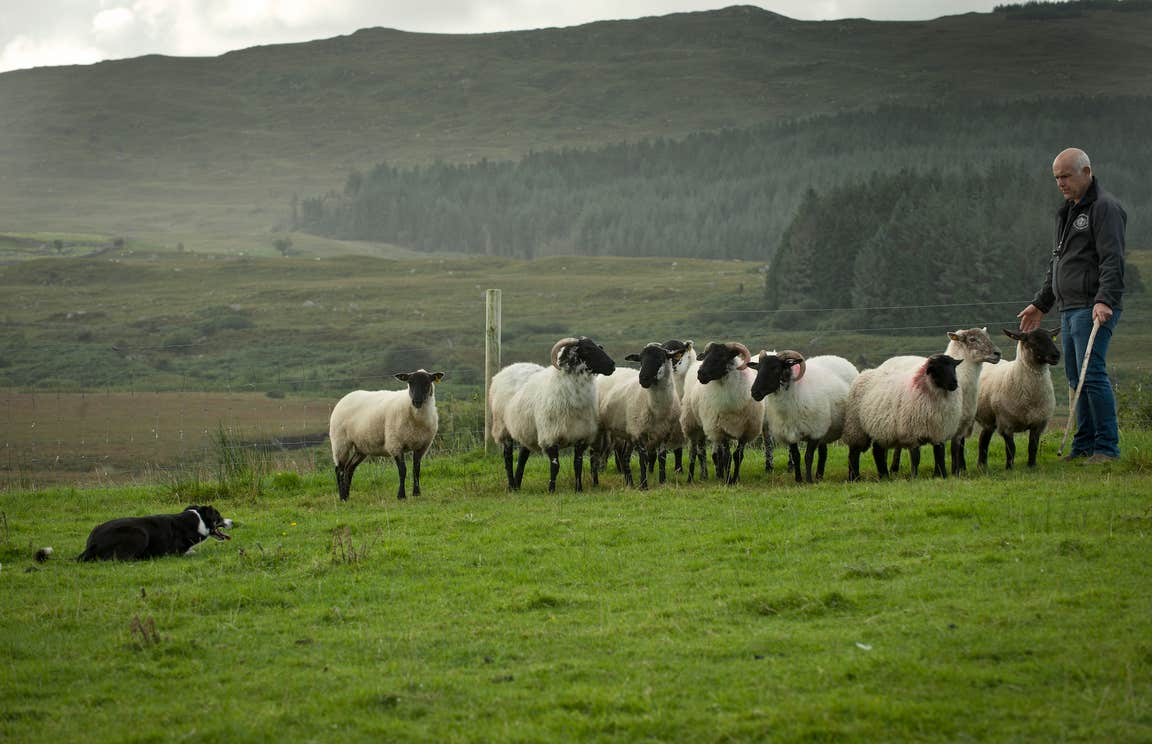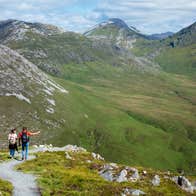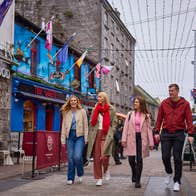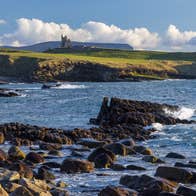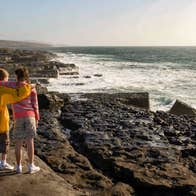Set in one of the most picturesque corners of Connemara, Killary Sheep Farm is home to over 200 ewes and lambs who roam the deep green mountains overlooking the fjord below. Pay a visit to the herd of mostly blackhead horny sheep and you can watch working sheepdog demonstrations with resident pups Sweep, Lassie and Fly. You’ll also see how the farmers shear the sheep by hand and, cutest of all, feed baby lambs during the spring and summer months.
While the animals are the stars of the show, the location is just as impressive. The sloping fields criss-crossed with old stone walls and boulders lead down to the still waters of Killary Harbour – it’s quintessential Connemara.
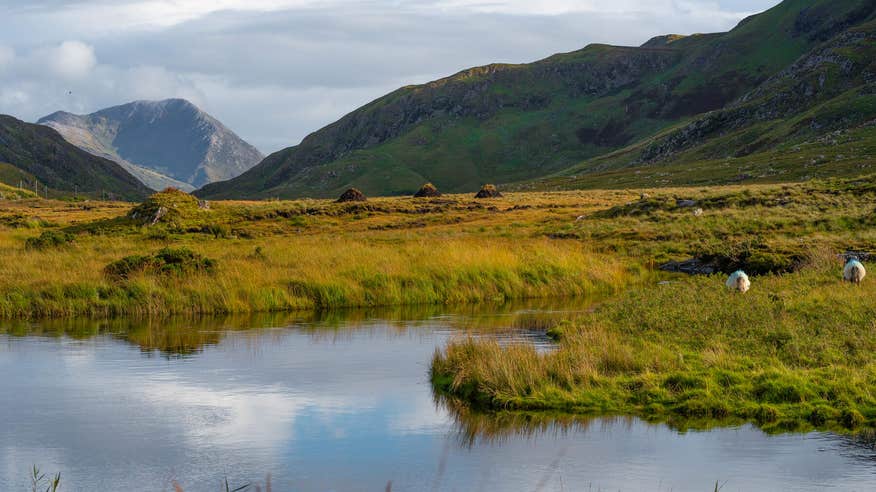
Just beyond the waterside village of Leenane you’ll find the Connemara Sheep and Wool Centre, a museum and shop where you can learn all about the art of wool craft, from sheep to spool. Start off in the museum where you’ll get an insight into the history of the local wool industry, before watching how they turn sheep’s fleece into wool in their demonstrations, using wheels and looms from the early 1900s. You can even give it a go yourself, if you fancy giving it a spin (so to speak).
Allow some time to browse in the shop, where you can find knitwear, woolly hats and sheepskin slippers.
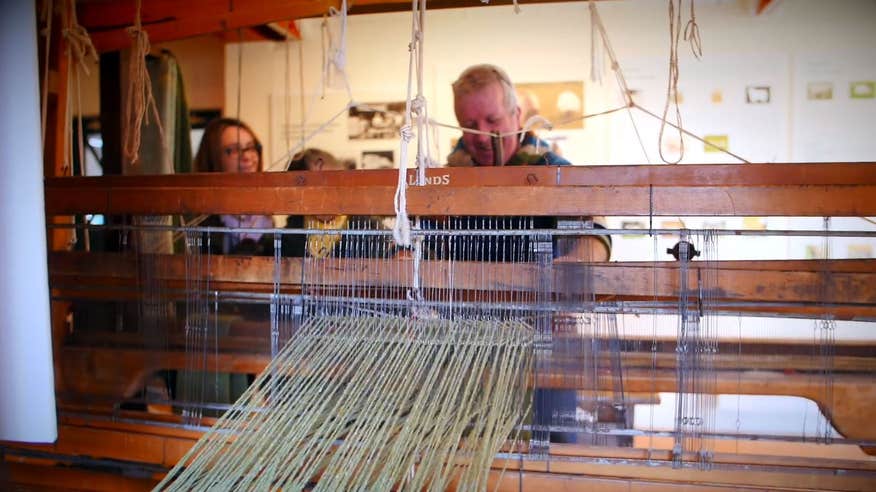
There are straggly sheep scattered all over Connemara, and on a visit to Joyce Country Sheepdogs you’ll see exactly how the border collies herd the flock on this family farm. On the shores of Lough Nafooey, you’ll be able to watch sheepdog demonstrations, visit the resident donkeys Seamie and Síle, and see the sheep shearing in the spring and summer months. You might even see some collie puppies running around, too. They often hold talks about sheep farming on mountainsides, which is something of a local speciality.
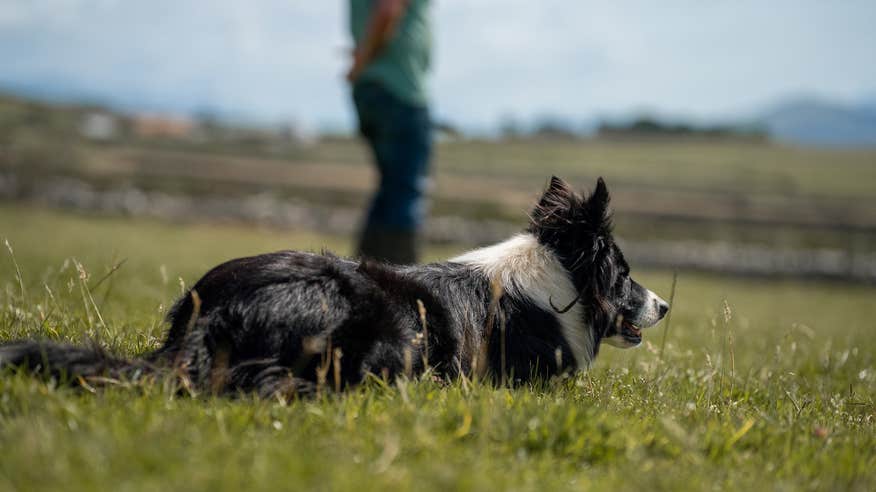
A family farm for over four generations, Glengowla Mines & Family Farm Experience is right at the gateway to Connemara, where you can delve into all things sheep related. The owner of the farm, Keith Geoghegan, works with his sheepdogs to show off their herding techniques, and you can give both the dogs and sheep a stroke at the end. In the spring, there are lambs to pet as well.
However, Glengowla isn’t just a family farm – it’s also home to a 19th-century silver and lead mine. Decommissioned in 1865, you can don a helmet and go underground into the mine itself, before panning for gold back above ground.
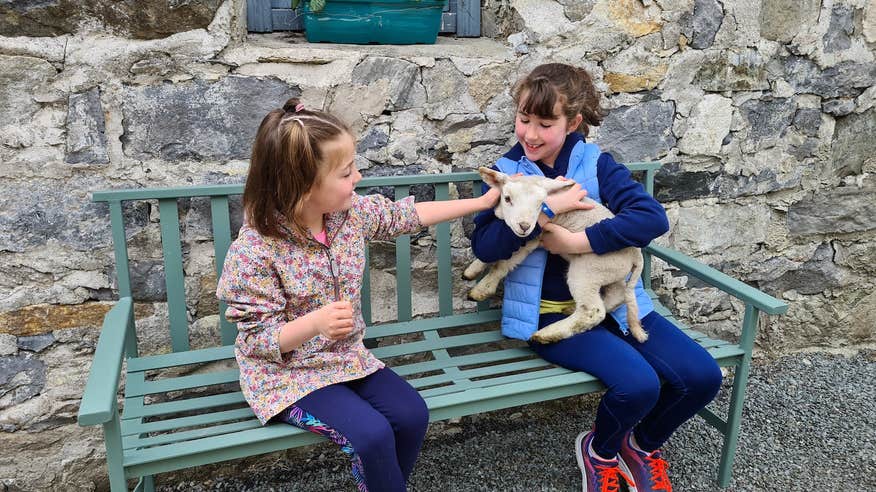
You can’t talk about Irish knitwear without thinking of the classic Aran sweater. This water-repellent jumper is synonymous with Árainn (Aran Islands), designed to keep fishermen warm and dry at sea, while telling the story of their families through the unique clan knitting patterns and stitches.
The Aran Sweater Market on Inis Mór (Inishmore) is one of the most famous spots dedicated to this classic island item. Primarily a shop where you can browse their own sweaters and cardigans – or pick up knitting wool and patterns to make your own – there’s also a dedicated area where you can learn all about the origins of the Aran sweater, what the distinctive patterns represent and the role that this knit has played in island life over numerous generations.
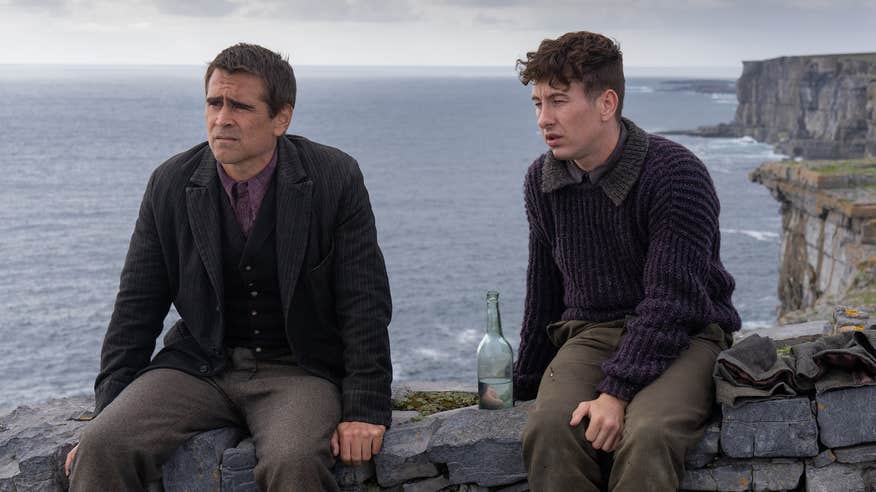
Out towards the coast at Ballinaboy, Derrigimlagh is on a stretch of bogland where two key moments in 20th-century history took place. The world’s first transatlantic radio station, built by Guglielmo Marconi and later destroyed in the Irish War of Independence, was on this very spot, and you can still see some of the remains today. And in 1919, John Alcock and Arthur Whitten Brown manned the world’s first transatlantic flight, after taking off in Newfoundland and crash landing in the bog.
Nowadays, you can take a 5km looped walk on the boardwalks over the bog, to see both remnants of the Marconi site and a cairn that marks the spot where Alcock and Brown landed. As you walk, you’ll pass by the sheep that graze the bog, who may well join you on your stroll.
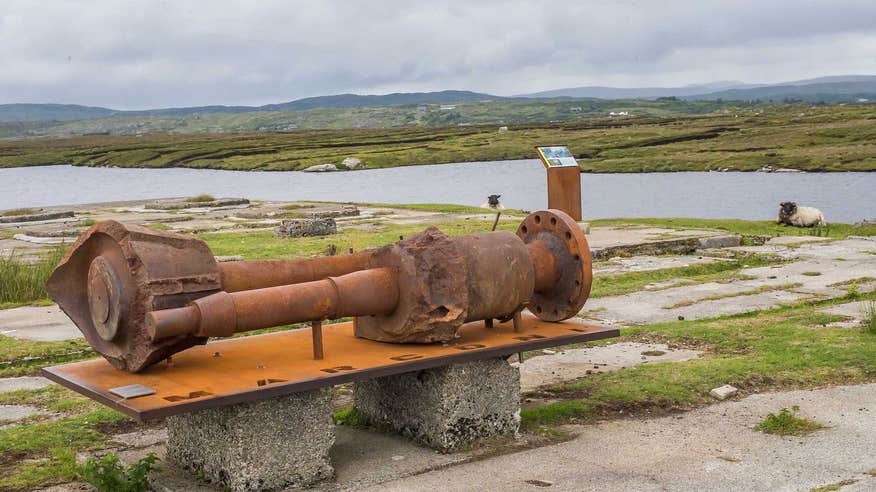
Though it’s been a part of life on the island since its inception in 1976, the Inis Meáin Knitting Company has a more modern feel to its designs. Supplying some of the coolest stores around the world (and admired by celebrity fans like Patrick Dempsey), they make the pieces in small batches right here in the island workshop, using heritage designs with a contemporary twist.
You can browse the sweaters, cardigans and throws in their shop on Inis Meáin (Inishmaan), which is open from March to September and by appointment in the winter months.
On the border between counties Galway and Mayo, Lough Nafooey is a glacial lake that formed thousands of years ago when the ice that once covered Ireland began to melt. Go even further back (490 million years, to be exact) and you’d find the area around it was once a volcano, which is why you can still find some volcanic lava rocks scattered around the landscape.
But today, it’s a beautiful spot for a drive, and also grazing ground for many local sheep, who wander the fields around the lakeshore.
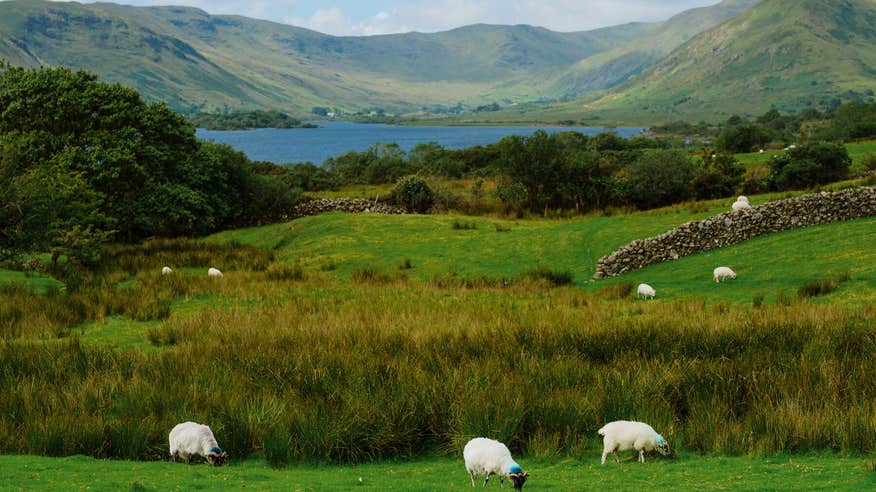
Take the Bog Road from Clifden to Cloch na Rón (Roundstone) to explore some of Connemara’s finest landscapes by car. You’ll see the Connemara Mountain sheep pottering around the bog, nibbling the heather bushes and navigating the rocks and boulders scattered around the fields and lakeshores. You’ll also pass along the Roundstone Bog conservation area and a deserted village, and get the chance to check out the cafés, shops and cosy pubs in both Roundstone and Clifden. In the latter, Millars Connemara is a great spot for contemporary knits and Hehir’s of Clifden has great traditional pieces, if you’re in the mood to shop.
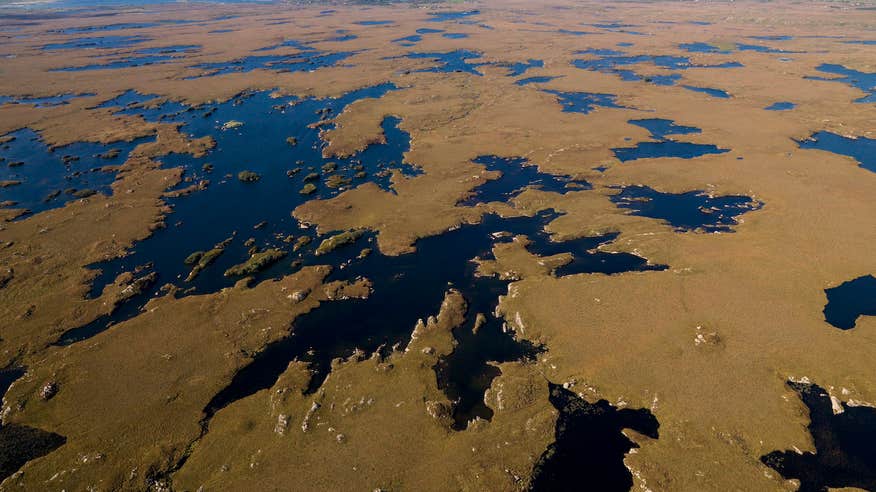
Using only wool spun from sheep in in the area (including their own farm), Joyce Country Wool is a one-stop shop when it comes to knitwear. Carina Coyne spins the yarn, colours it with natural dyes made from local lichens, berries, plants and vegetables, and then knits it into hats, slippers and gloves.
You can learn those skills yourself on a four-day workshop, where you’ll cover the art of carding, spinning, plying and gathering the natural dyes for the wool. Outside of those workshops, she also runs knitting tours.
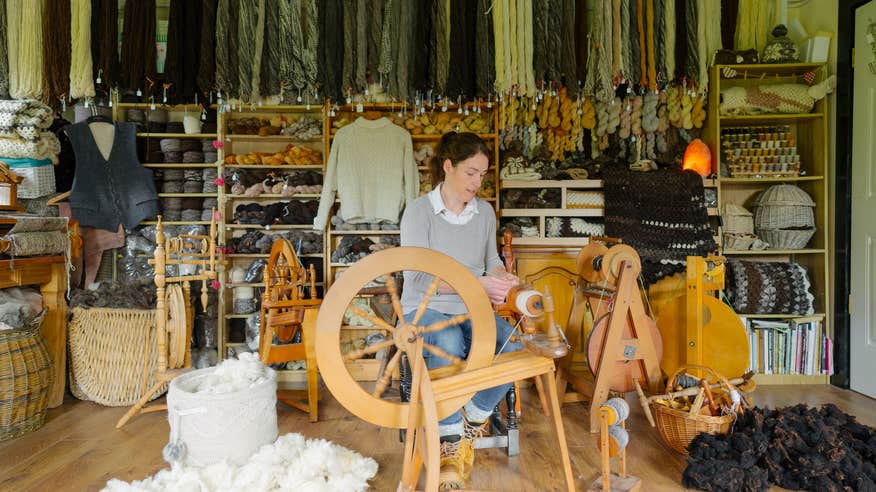
Fancy a bit of a pilgrimage? The Máméan Trail is high up in the Maum Turk Mountains and follows an ancient pilgrimage route once climbed by St Patrick, when he gave Connemara his blessing. While there are plenty of historic remnants along the route, like a holy well, mass rock and stone circles, it’s also a great spot to drink in the local mountain scenery, with views of the nearby Twelve Bens and Maum Turks.
Overlooking the pilgrimage site Leaba Padraigh (St Patrick’s Bed), there’s a statue of the saint as a shepherd with a lamb by his feet, and you’ll likely see plenty of local sheep roaming around the sides of the trail.
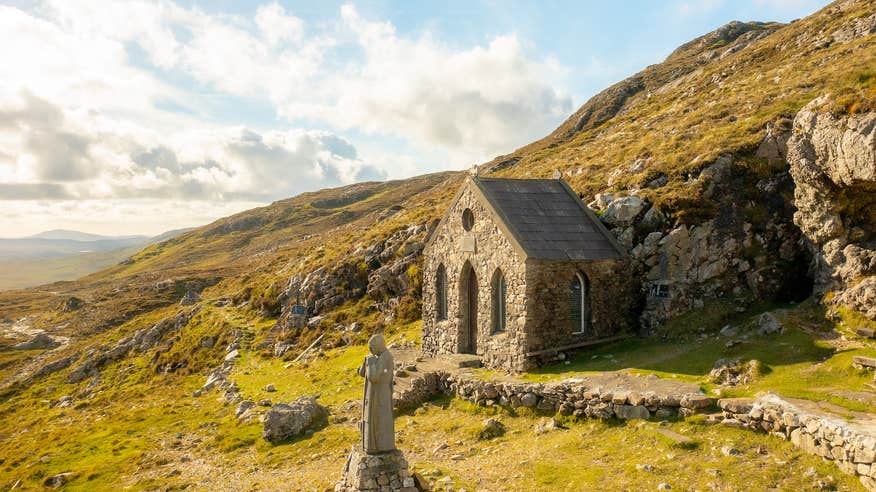
One of the first places to export Aran knits to America (where they’re now experiencing a resurgence thanks to fans like Taylor Swift), Standún has been a family-run business in An Spidéal (Spiddal) since it was founded in 1946. Today, their shop is run by the third generation and stocked with a huge variety of Aran knits, from sweaters and cardigans to capes and wraps. You can discover more about their story in the Aran Room, and they also have an in-store café if you fancy a cup of coffee and a slice of cake.
You’ll find Aran Island Sweaters in a traditional thatched cottage in Kilmurvey village, right by the base of Dún Aonghasa fort on Inis Mór. Inside their shop, An Túirne (the Spinning Wheel), you can see the original spinning wheel once used by owner Rosemary Faherty’s great grandmother – Rosemary’s family have lived on Inis Mór for eight generations. In the shop, you can browse their merino knits, ponchos and cardigans, as well as one-of-a-kind Aran sweaters hand knitted with Aran wool.
Alongside the beautiful scenery you’ll find in the Connemara National Park, there are also rare breed Cladóir Sheep, an unusual white-faced sheep known for their very fine wool, which is ideal for spinning and weaving. The Cladóir Sheep Preservation Committee is working with the national park in the hope of regenerating this breed, which were once common on the Connemara coast (the name Cladóir means ‘coastal dweller’).
Once in the park, you can explore hiking trails that range from an easy path on the Ellis Wood Nature Trail to a more strenuous 3.7km route up Upper Diamond Hill. There’s also a nature trail which leads you to the diverse trees found in the park, and the Hungry Hiker Café, for homemade scones and a pot of tea.
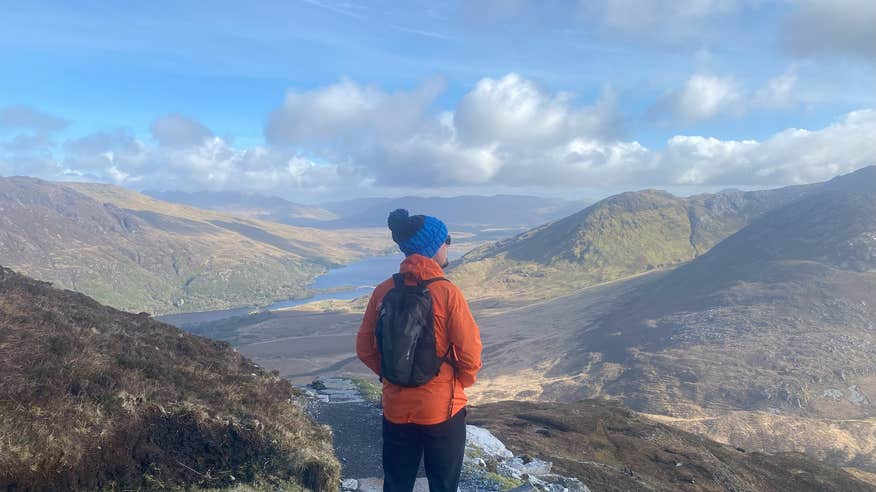
Test your film knowledge while exploring some of the country's most famous sets along the Connemara Film Trail.
